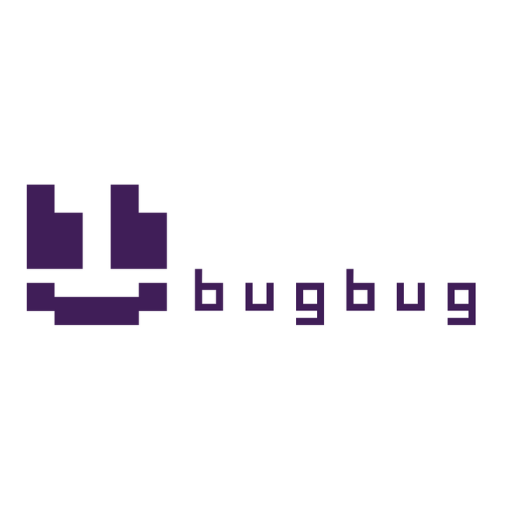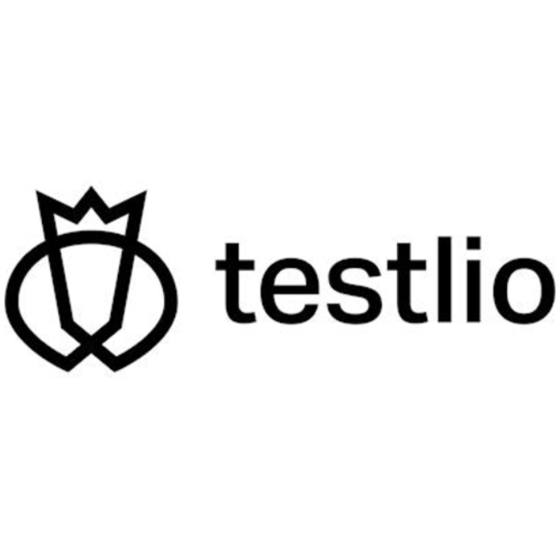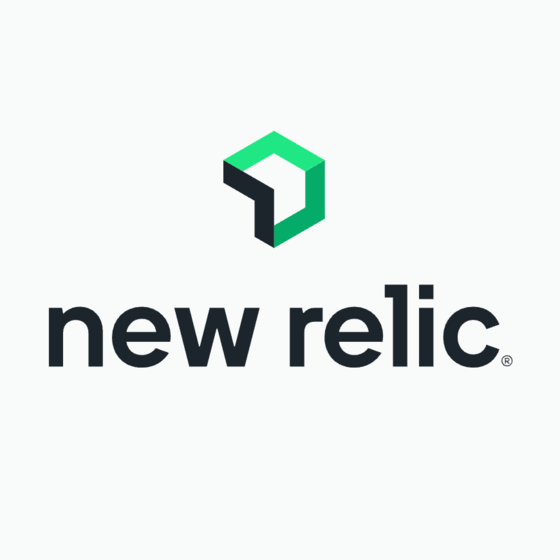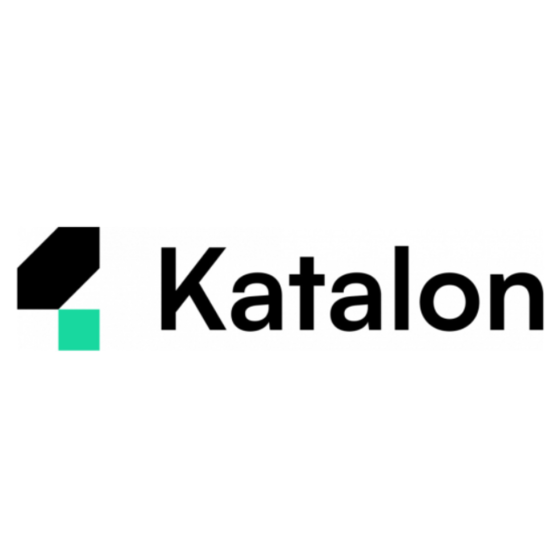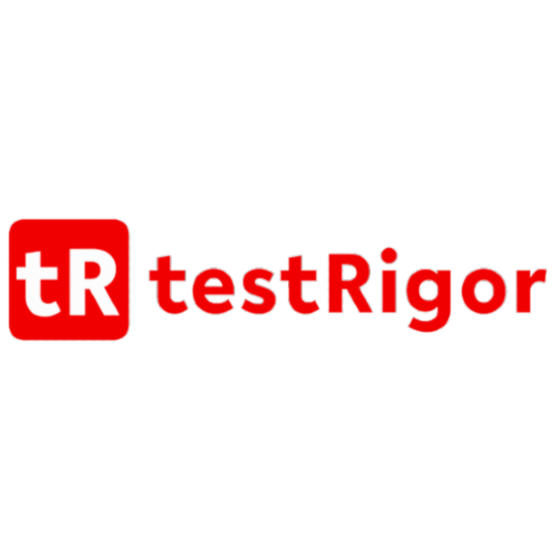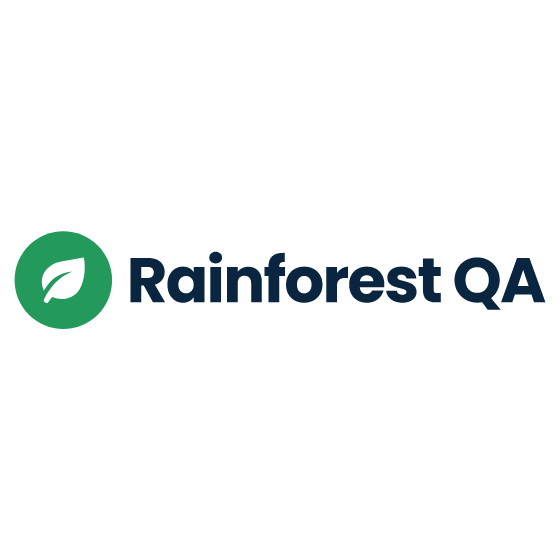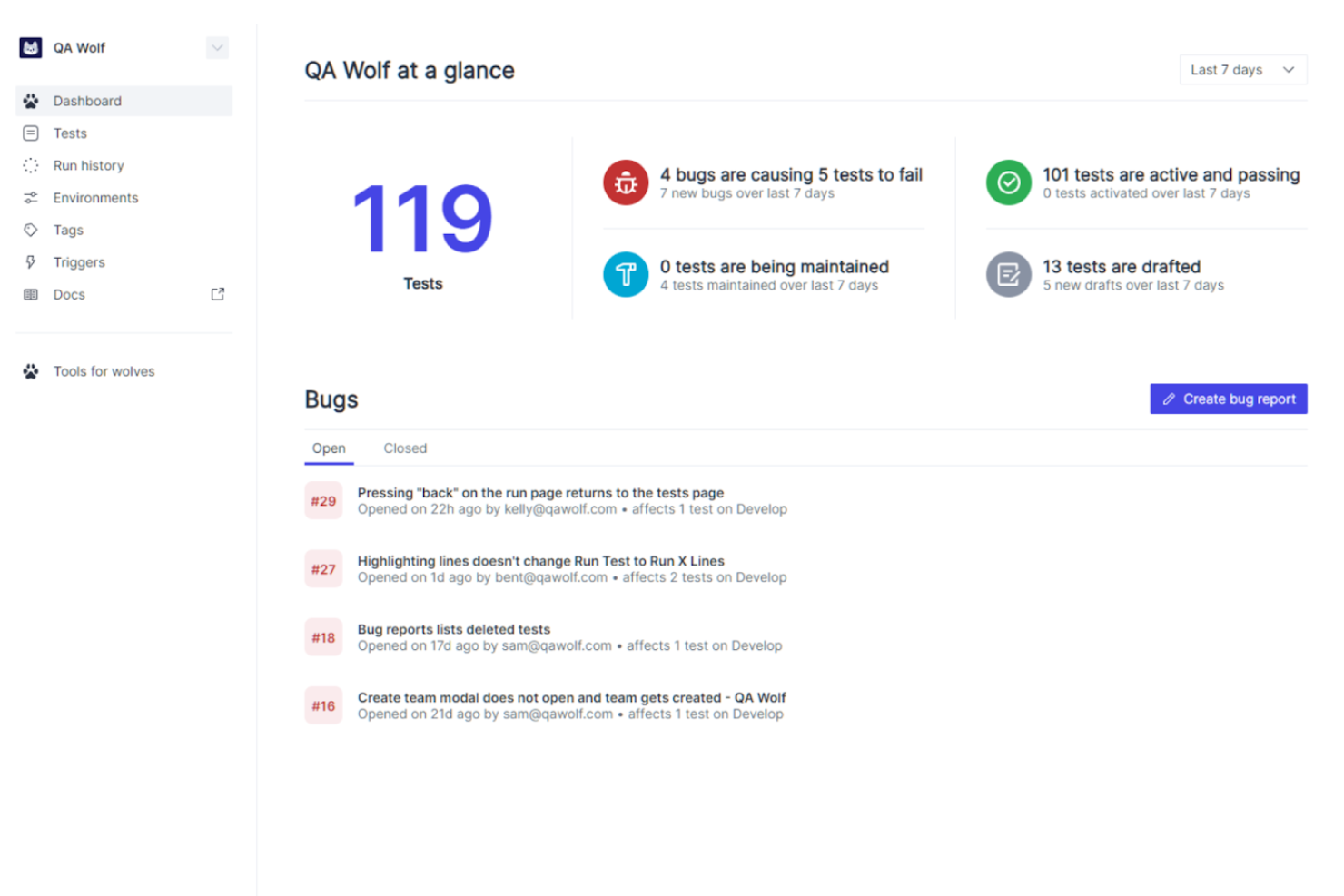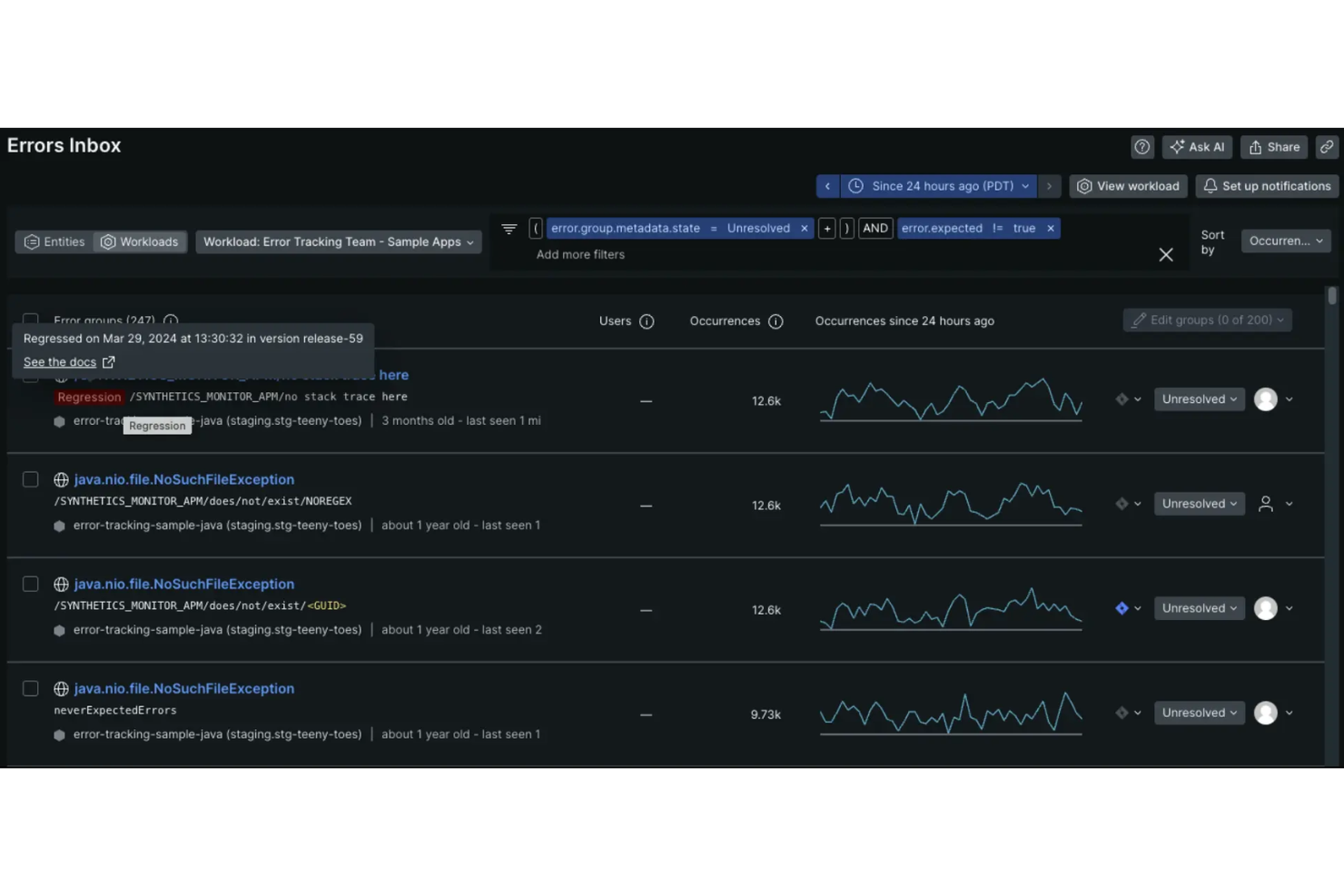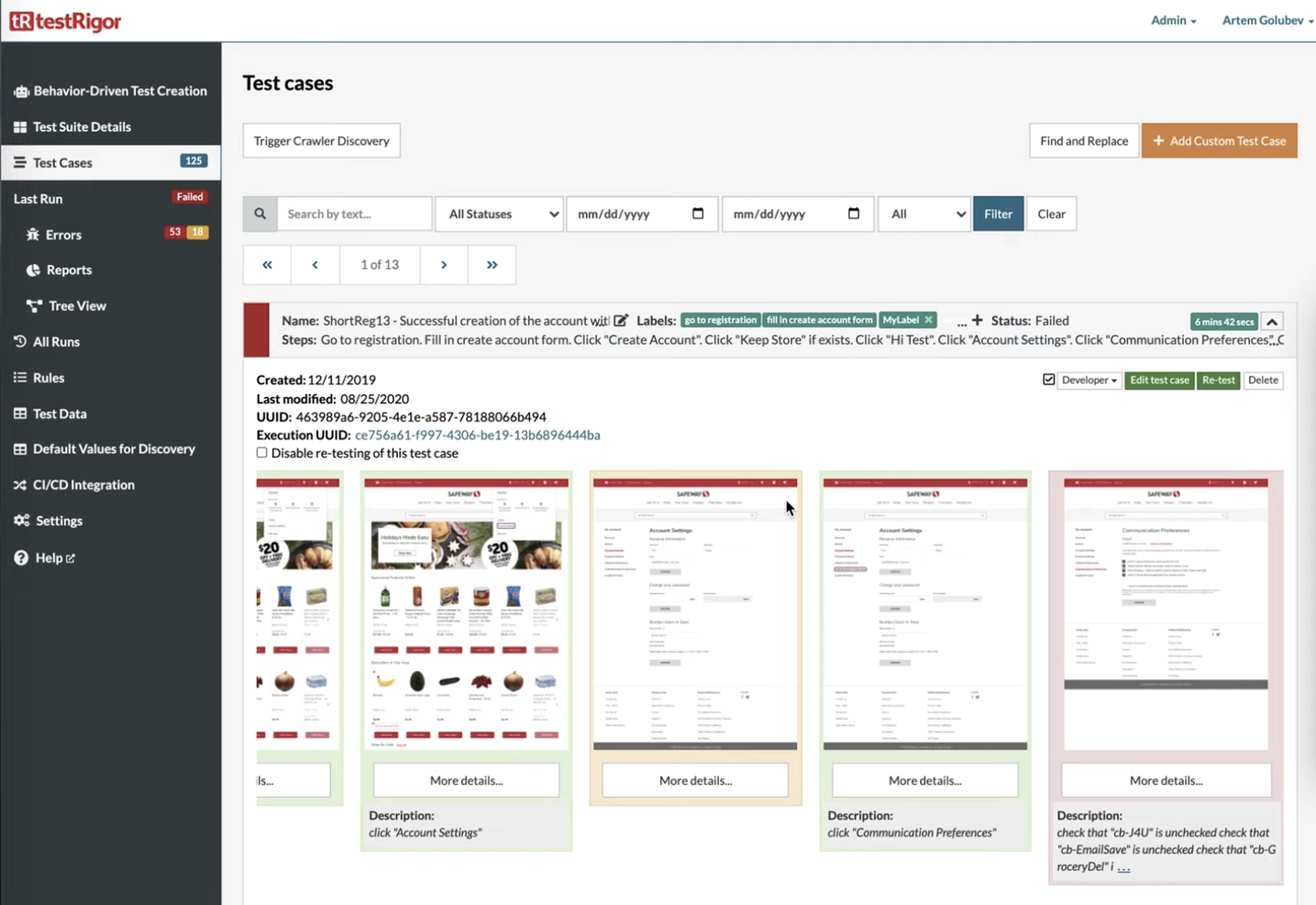10 Best Regression Testing Tools Shortlist
Here's my pick of the 10 best software from the 20 tools reviewed.
Our one-on-one guidance will help you find the perfect fit.
There are seemingly countless regression testing tools available, so figuring out which is best for you is tough. You want to ensure new code changes don't break or negatively impact the existing functionalities of your software but need to figure out which tool is the best fit. I've got you! In this post I make things simple, leveraging my experience using dozens of different regression testing software to bring you this shortlist of the best regression testing tools.
Why Trust Our Regression Testing Tool Reviews?
We’ve been testing and reviewing regression testing tools since 2021. As QA software testers ourselves, we know how critical and difficult it is to make the right decision when selecting software.
We invest in deep research to help our audience make better software purchasing decisions. We’ve tested more than 2,000 tools for different use cases and written over 1,000 comprehensive software reviews. Learn how we stay transparent & our regression testing tools review methodology.
The Best Regression Testing Tools Summary
| Tool | Best For | Trial Info | Price | ||
|---|---|---|---|---|---|
| 1 | Best for expert-led regression testing | Free demo available | Pricing upon request | Website | |
| 2 | Best for low-code test automation | Free plan available + free demo | From $99/month (billed annually) | Website | |
| 3 | Best suite of flexible and on-demand testing solutions | Not available | Pricing upon request | Website | |
| 4 | Best for synthetic testing | Free plan + demo available | Pricing upon request | Website | |
| 5 | Best full toolkit for complete test coverage | Free plan available + free demo | From $183/user/month | Website | |
| 6 | Best for CI/CD tool integration | 14-day free trial | From $212/month | Website | |
| 7 | Best for AI-driven test maintenance | 3-month free trial | Pricing upon request | Website | |
| 8 | Best to convert manual tests into automated tests | Free trial available + free demo | From $300/month (billed annually) | Website | |
| 9 | Best UI-driven testing solution for regression & functional tests | 14-day free trial | Pricing upon request | Website | |
| 10 | Best for automating Windows applications | Not available | Pricing upon request | Website |
-

QA Wolf
Visit WebsiteThis is an aggregated rating for this tool including ratings from Crozdesk users and ratings from other sites.4.8 -

BugBug
Visit WebsiteThis is an aggregated rating for this tool including ratings from Crozdesk users and ratings from other sites.5 -

Testlio
Visit WebsiteThis is an aggregated rating for this tool including ratings from Crozdesk users and ratings from other sites.4.6
Best Regression Testing Tools Reviews
Here’s a brief description of each regression testing system to showcase each tool’s best use case, some noteworthy features, and screenshots to give a snapshot of the user interface.
QA Wolf is an automated testing platform designed for developers and QA teams. Unlike traditional tools, QA Wolf is a platform-enabled service that leverages a team of expert QA engineers to handle the creation, execution, and management of all your automated tests. This approach simplifies the testing process and consistently keeps your critical tests maintained and up-to-date, allowing your team to focus on building and improving applications while ensuring new updates in code do not produce any issues.
One of the unique features of QA Wolf that makes it ideal for regression testing is its provision of human-verified bug reports. This ensures that any identified issues are thoroughly vetted by QA experts, minimizing false positives and providing clear, actionable feedback. QA Wolf also offers unlimited test runs, allowing teams to run regression tests as often as needed without worrying about additional costs.
QA Wolf integrates with GitHub, CircleCI, GitLab, Travis CI, Vercel, and Slack. Pricing is available upon request with a free demo available.
BugBug is a user-friendly and reliable test automation tool that offers a low-code solution for QA, developers, and product managers to ensure the quality of web apps and websites without repetitive manual testing. It allows users to create end-to-end tests in minutes.
BugBug's ability to generate stable selectors based on a project's configuration ensures that automated tests are less likely to break with UI changes. BugBug's capability to record complex interactions, including those across different tabs or iframes, is crucial for comprehensive regression testing of intricate web applications. Additionally, it allows for flexible test editing and the addition of assertions, facilitating the adaptation of tests as applications evolve. Its screenshot and screen-capturing features further aid in identifying UI changes and errors introduced by recent code modifications.
Integrations include GitHub, GitLab, Jira, Slack, Trello, Bitbucket, and Zapier. Pricing begins from $99/month with a free trial and free plan available.
Testlio is an automated regression testing tool that primarily provides managed application testing. The tool provides a robust suite of flexible and on-demand testing solutions such as end-to-end testing, functional testing and localization testing. Testlio also offers a support team and expert QA resources, allowing easy implementation within your team.
Testlio offers an abundance of features, including detail oriented test plans, which allow you to review the device information, tester information and test criteria. The tool also provides exploratory testing and livestream testing, allowing you and your team to test your applications in real-time, as well as review the bugs identified on the tool’s dashboard. Finally, Testlio allows you access to all devices within your system without the need to build labs.
Testlio provides integrations with project management tools such as Aana and Jira, as well as IDE’s such as Visual studio.
Testlio offers flexible customized pricing upon request.
New Relic is an observability platform that helps you monitor and improve your software's performance. Through its synthetic monitoring, you can proactively keep tabs on your applications by simulating user interactions. It helps you identify issues before your users do, ensuring a smooth experience.
I like that it offers the ability to create scripted browser monitors. These monitors allow you to simulate complex user interactions, such as navigating through different pages or submitting forms, which is essential for testing critical user flows after code changes. By mimicking real user behavior, you can ensure that new deployments haven't introduced any unexpected issues.
Another valuable feature is the comparative charting between synthetic and real user monitoring data. This lets you directly compare page load times and other performance metrics between your automated tests and actual user experiences. Such insights help you understand if a regression affects all users or is isolated to specific scenarios.
Katalon Studio is an all-in-one regression testing platform for simplified web, mobile, API and desktop (Windows, Linux and Mac OS) test automation, and is the alternative to building traditional frameworks with open-source libraries. Katalon Studio offers built-in features such as Object Spy, Debugging UI, Test Artifact Sharing, Retry Failed Tests, Smart Wait, Self-Healing and analytics for test reporting, which provides you complete test coverage from within the toolkit alone.
Katalon Studio provides you with all critical capabilities and stability for functional and end-to-end automated testing, providing your team with a robust testing grid for your application lifecycle. The tool allows you to cycle through every step in weeks instead of months by applying low-code methods for test creation, execution, maintenance, and reporting.
Katalon offers integration with CI/CD tools such as Jenkins, BitBucket, Azure DevOps, VCS platforms such as Git, Github, Azure DevOps Repos, and DevOps tools such as Docker.
The cost of Katalon Studio starts from $69 per user per month. The tool also offers a free version, as well as a 30-day trial to test out all premium features for first-time users.
Reflect is a regression testing platform that helps you automate end-to-end tests without writing any code. It’s built around AI prompts, so you can describe a test in plain English and have Reflect turn it into executable steps. I liked how quickly you can build and run regression suites without touching selectors or scripting frameworks.
I picked Reflect because it removes the complexity from regression testing. Instead of writing and maintaining brittle code, it generates tests by simply typing what you want to happen. Reflect also automatically handles UI changes—tests adapt when the app evolves, which means fewer false positives and less upkeep. I also appreciate the visual diffs and video recordings of test runs, which made debugging faster and clearer.
Reflect supports visual checks, cross-browser runs, parallel execution, and API+UI testing in the same flow. It integrates with CI/CD tools like GitHub, Jenkins, and Jira, lets you schedule tests, and notifies you of failures instantly. You can also use parameterized inputs and isolate test data to cover different scenarios.
Autify is an AI-powered, no-code test automation platform designed to help teams create, execute, and maintain automated tests for web and mobile applications.
I picked Autify because of its AI-powered maintenance and cross-environment testing support. Its AI automatically updates test scenarios when UI changes occur, reducing the need for manual maintenance and helping your team keep regression tests accurate over time. You can also run the same tests across multiple browsers and devices without rewriting them, making it easier to catch regressions in different environments and ensure consistency across platforms.
Integrations include Bitbucket Pipelines, GitHub Actions, CircleCI, Jenkins, GitLab CI/CD, Azure Pipelines, AWS CodeBuild, Autify Connect, Bitrise, API integration, Command Line Interface (CLI), and Slack.
testRigor is a regression testing tool that stands out when it comes to the new era of AI-based automation tools. The tool allows you to create tests in plain English, with elements being referenced from a human perspective. testRigor analyzes all possible parameters behind the scenes to use the most useful ones, which results in ultra-reliable tests.
testRigor allows you to dramatically decrease your test maintenance, by allowing you and your team to spend 95% less time on it on average. Instead, the tool allows you to seamlessly build new tests and increase test coverage. testRigor makes the process of converting existing manual test cases into automated tests very straightforward, and users can also define and customize their own wording if they desire.
The cost of testRigor starts at $300 per month and can be tailored to your specific needs. There is a free 14-day trial with no credit card information required upfront.
Rainforest QA is a no-code regression testing solution that provides a building block approach for creating tests and processes. The tool allows you to set up a repeatable testing environment, so you and your team are able to streamline your test process within this environment as often as you need. Rainforest QA also allows you to easily shift between parallel and sequential testing so you are able to keep pace with the development environment, and reduce time between sprints.
Rainforest QA’s intuitive and simple user interface enables you to better organize your test cases by allowing you and your team to tag cases so you can group them, as well as assign and monitor said test cases which are all managed from a single dashboard. The tool allows you to execute cross browser testing (Internet Explorer, Chrome, Edge), as well as access various systems (such as Windows and Linux), providing you extensive test coverage of your application. Rainforest QA also has the results arriving as tests within a suite are still being executed.
Rainforest QA provides integration with notification platforms such as Slack and Microsoft Teams, as well as continuous integration platforms such as Github and CircleCI.
Rainforest QA is free to use for the Professional tier, and offers customized pricing for their Enterprise tier. The tool also offers a 14-day free trial.
Best for automating Windows applications
Micro Focus Unified Functional Testing is an intelligent testing tool that offers test automation within AI-based capabilities, allowing you to to accelerate your testing across desktop, mainframe, and mobile. The tool offers cross-browser coverage and cloud-based deployment, and provides reporting dashboards.
Micro Focus Unified Functional Testing automates your Windows applications in particular and uses VB scripting, which allows members of your team who have less development experience to work with the tool. The tool also provides a robust support system ranging from a developers’ forum to a dedicated customer support team. This allows you to ensure your team has everything they need to complete their testing within your application’s development lifecycle.
Micro Focus Unified Functional Testing integrates with platforms such as Jenkins, QC, and Postman.
Micro Focus Unified Functional Testing offers customized pricing on request.
Other Regression Testing Tools
Here are a few more that didn’t make the top list.
- IBM Rational Functional Tester (RFT)
To simplify test virtualization & editing using screenshots
- Watir
For executing tests on browsers
- Leapwork
To build processes visually for non-technical team members
- Selenium
For developers testing UI performance and functionality
- Tricentis Testim
For organizing your test cases in one visual editor
- Appsurify TestBrain
For AI-driven test optimization
- Argos
For testing visual elements
- Owlity
For autonomous test generation
- Telerik Test Studio
Windows-based automated testing tool that supports a variety of testing suites including RESTful API testing
- Cerberus Testing
Open source automated testing solution that is low code and allows continuous end-to-end testing
Related Regression Testing Tool Reviews
If you still haven't found what you're looking for here, check out these tools closely related to regression testing tools that we've tested and evaluated.
- Automation Testing Tools
- Software Testing Tools
- Test Management Tools
- CI/CD Tools
- Incident Management Software
- Code Review Tools
Selection Criteria for Regression Testing Tools
Selecting the right regression testing tools is an important decision that can significantly influence the efficiency and effectiveness of a software development team's testing processes. Based on my firsthand experience and extensive research into these tools, I've developed a set of criteria tailored to identify solutions that adeptly meet the needs of modern software development practices. These criteria are crafted to address the common challenges teams face when executing regression tests, ensuring that the selected tool not only streamlines testing activities but also integrates seamlessly into the development workflow.
Core Regression Testing Tool Functionality: 25% of total weighting score
To be considered for inclusion on my list of the best regression testing tools, the solution had to support the ability to fulfill common use cases:
- Automating repetitive test scenarios to save time and reduce human error.
- Integrating with existing development and deployment tools for streamlined workflows.
- Providing clear, actionable insights through detailed test reports and analytics.
- Facilitating easy update and maintenance of test cases as the software evolves.
- Supporting scalable testing strategies to accommodate projects of varying sizes and complexities.
Additional Standout Features: 25% of total weighting score
When identifying standout features, I look for:
- Advanced AI and machine learning capabilities for intelligent test creation and optimization.
- Cloud-based execution environments for enhanced accessibility and scalability.
- Built-in collaboration tools that enable team members to share results and insights easily.
- Customizable notifications and alerts to keep teams updated on testing progress and outcomes.
- Support for codeless automation to allow non-technical team members to contribute to testing efforts.
Usability: 10% of total weighting score
Key usability factors include:
- A user-friendly interface that minimizes the learning curve for new users.
- Intuitive test creation and management workflows.
- Comprehensive documentation and in-software guidance to assist users.
- Accessibility features that cater to a diverse range of users.
Onboarding: 10% of total weighting score
Effective onboarding is characterized by:
- Availability of comprehensive training resources, such as online tutorials and webinars.
- Initial setup support, including help with integrating the tool into existing workflows.
- Access to responsive customer service during the onboarding phase.
- Community forums or user groups for peer support and knowledge exchange.
Customer Support: 10% of total weighting score
I evaluate customer support based on:
- The responsiveness and expertise of the support team.
- Multiple channels of support (e.g., email, chat, phone).
- The presence of an extensive knowledge base or FAQs for self-help.
- Regular updates and transparent communication from the provider.
Value For Money: 10% of total weighting score
Value assessments involve:
- A clear understanding of pricing relative to the features and benefits provided.
- Flexible pricing options that accommodate teams of different sizes and budgets.
- Transparent cost structures without hidden fees.
- Demonstrated ROI through efficiency gains and quality improvements.
Customer Reviews: 10% of total weighting score
In considering customer reviews, I focus on:
- Overall satisfaction with the tool’s performance and reliability.
- Specific feedback on ease of use, feature set, and customer support quality.
- Success stories of improved testing efficiency and software quality.
- Constructive criticism and how the tool’s developers respond to feedback.
By applying these criteria rigorously, I ensure that the recommended regression testing tools not only meet the basic requirements for automating and managing regression tests but also provide additional value through advanced features, usability, and support. This comprehensive approach helps software development teams select tools that effectively support their testing strategies and contribute to the delivery of high-quality software.
How to Choose Regression Testing Tools
With so many different regression testing tools available, it can be challenging to make decisions on what tools are going to be the best fit for your needs.
As you're shortlisting, trialing, and selecting regression testing tools, consider:
- What problem are you trying to solve - Start by identifying the regression testing tool feature gap you're trying to fill to clarify the features and functionality the tool needs to provide.
- Who will need to use it - To evaluate cost and requirements, consider who'll be using the software and how many licenses you'll need. You'll need to evaluate if it'll just be the QA software testers or the whole organization that will require access. When that's clear, it's worth considering if you're prioritizing ease of use for all or speed for your regression testing tool power users.
- What other tools it needs to work with - Clarify what tools you're replacing, what tools are staying, and the tools you'll need to integrate with, such as other testing tools, automation tools, or bug tracking software. You'll need to decide if the tools will need to integrate together or if you can replace multiple tools with one consolidated regression testing tool.
- What outcomes are important - Consider the result that the software needs to deliver to be considered a success. Consider what capability you want to gain or what you want to improve and how you will be measuring success. For example, an outcome could be the ability to get greater visibility into performance. You could compare regression testing tool features until you’re blue in the face but if you aren’t thinking about the outcomes you want to drive, you could be wasting a lot of valuable time.
- How it would work within your organization - Consider the software selection alongside your workflows and delivery methodology. Evaluate what's working well, and the areas that are causing issues that need to be addressed. Remember every business is different — don’t assume that because a tool is popular that it'll work in your organization.
Trends In Regression Testing Tools
A detailed review of the latest product updates, press releases, and release logs from leading regression testing tools reveals significant trends and shifts in the technology used to execute software tests. Here's a comprehensive look at these trends and how they are shaping the future of regression testing:
Trends in Regression Testing Tools and Technology
- Increased Automation and AI Integration: Automation remains at the forefront, with tools now incorporating artificial intelligence and machine learning to enhance test creation, execution, and analysis. This evolution addresses the need for faster, more efficient testing cycles and the ability to predict potential failures before they occur.
- Shift Towards Cloud-Based Solutions: There's a noticeable trend towards cloud-based regression testing platforms, offering greater scalability, flexibility, and accessibility. This shift facilitates remote testing capabilities and supports distributed teams, aligning with the growing trend of remote work.
- Enhanced Integration with DevOps and Agile: As software development practices lean more heavily on DevOps and Agile methodologies, regression testing tools are evolving to integrate seamlessly with these workflows. This integration ensures continuous testing and delivery, reducing the time to market and enhancing product quality.
Rapidly Evolving Features
- Advanced Analytics and Reporting: Tools are now providing more sophisticated analytics and reporting features, enabling teams to gain deeper insights into test results and software quality. This functionality supports data-driven decision-making and continuous improvement in testing strategies.
- Codeless Test Automation: The rise of codeless automation features allows a broader range of team members, including those with limited coding skills, to contribute to testing efforts. This inclusivity enhances collaboration and efficiency in test case creation and maintenance.
Novel and Unusual Functionality
- Use of Virtual and Augmented Reality: Some tools are introducing capabilities for testing applications in virtual and augmented reality environments, catering to the emerging needs of applications in these innovative spaces.
- Blockchain Testing: With the increasing adoption of blockchain technology, new functionalities are being developed to address the unique challenges of testing blockchain applications, emphasizing security and transaction integrity.
Most Important and In Demand Features
- Cross-Platform and Cross-Browser Testing: The ability to execute tests across multiple platforms and browsers remains highly sought after, ensuring applications perform consistently regardless of the user's environment.
- Real-Time Collaboration Tools: Features that facilitate real-time collaboration among testing teams are in high demand, enabling faster resolution of issues and more cohesive testing strategies.
Features Becoming Less Important
- Manual Test Management: As automation and AI take center stage, manual test management and execution features are becoming less critical. Teams are seeking solutions that minimize manual intervention and maximize efficiency.
These trends highlight a clear trajectory towards more intelligent, flexible, and efficient regression testing solutions. As the software testing domain continues to evolve, staying abreast of these trends is crucial for QA software testers looking to optimize their testing processes and contribute to the development of high-quality software. The emphasis on automation, integration, and novel testing environments underscores the industry's commitment to innovation and excellence in software quality assurance.
What Are Regression Testing Tools?
Regression testing tools are software used to automate the process of testing software to confirm that recent code changes have not negatively impacted existing functionalities. These tools run a series of tests on previously functioning software following modifications, such as updates or bug fixes, to ensure that new changes do not introduce new errors or regressions in the existing system. Visual regression testing tools are particularly effective at detecting UI changes and layout issues.
The benefits and uses of regression testing tools include significant time savings and increased accuracy in the software development process. By automating repetitive testing tasks, these tools provide quick feedback on the impact of code changes, maintaining the stability and quality of the software. They ensure comprehensive test coverage, reducing the risk of bugs slipping into released versions. This is particularly valuable in continuous integration and agile development environments, where frequent changes to the software are common.
Features of Regression Testing Tools
Regression testing is a crucial process that ensures new code changes do not adversely affect existing functionalities. The right regression testing tools can significantly streamline this process, making it both efficient and effective. Having explored and researched a variety of tools in this space, I've identified key features that are essential for any regression testing tool to successfully execute software tests.
- Automated Test Execution: This feature enables the automatic running of test cases without manual intervention. It's vital for saving time and resources during the testing process, allowing teams to focus on more complex tasks.
- Cross-Platform Support: Supports testing across multiple platforms and devices. This is crucial for ensuring that applications work seamlessly across all user environments.
- Integration with CI/CD Pipelines: Allows the tool to seamlessly integrate with continuous integration/continuous delivery pipelines. This integration is key for automating the testing process within the software development lifecycle.
- Comprehensive Reporting and Analytics: Offers detailed reports and analytics on test outcomes. Insightful reporting is essential for identifying trends, pinpointing areas of concern, and making informed decisions about future testing strategies.
- Test Case Management: Provides functionalities for organizing, managing, and tracking test cases and suites. Effective test case management is crucial for maintaining order and efficiency in the testing process.
- Version Control: Ensures that testers can manage and track changes to test scripts over time. Version control is vital for maintaining the integrity of test cases as the software evolves.
- Scalability: The tool can handle an increasing amount of work and accommodate growth in the number of test cases. Scalability is important for supporting the development of complex applications.
- Parallel Testing: Allows multiple tests to run simultaneously, reducing the time required for the testing process. Parallel testing is key for speeding up the delivery of software projects.
- Customizable Test Environments: Enables the creation of customizable testing environments that mimic real-world user conditions. This feature is crucial for uncovering specific environmental bugs and ensuring the software performs well under varied conditions.
- User-Friendly Interface: Features an intuitive and easy-to-navigate interface. A user-friendly interface reduces the learning curve for new users and enhances productivity.
Selecting a regression testing tool with these features ensures that software teams can execute thorough and effective regression tests. These capabilities not only enhance the efficiency of the testing process but also contribute to the overall quality of the software product. Ultimately, the right tool should empower teams to confidently release updates, knowing that new changes will not break existing functionalities.
Benefits of Regression Testing Tools
Regression testing tools play a crucial role in maintaining software quality, especially as applications become more complex and development cycles get shorter. For organizations looking to streamline their testing processes and enhance product reliability, understanding the benefits of regression testing tools is key. Here are five primary advantages these tools offer to users and organizations:
- Enhanced Test Efficiency: Automation of repetitive test cases significantly reduces the time and effort required for regression testing. This efficiency allows teams to focus on new features and functionalities, speeding up the development process while still ensuring quality.
- Consistent Accuracy: Automated regression testing tools perform tests precisely the same way every time they are run, eliminating the variability introduced by manual testing. This consistency helps in identifying bugs and errors with greater accuracy, leading to a more reliable software product.
- Improved Software Quality: Regular and thorough regression testing ensures that any potential issues are identified and resolved early. This continuous oversight helps in maintaining a high standard of software quality, contributing to user satisfaction and trust.
- Cost Savings in the Long Run: While implementing regression testing tools requires an initial investment, they lead to significant cost savings over time by reducing the need for manual testing resources and lowering the risk of costly post-release fixes.
- Better Resource Allocation: By automating the regression testing process, valuable human resources can be redirected from repetitive testing tasks to areas that require creative and strategic thinking, such as feature development or exploratory testing.
Costs & Pricing for Regression Testing Tools
Choosing the right regression testing tool is a critical step for organizations looking to enhance their software testing processes. With so many options available in the market, each offering different features and pricing structures, it can be challenging to determine which tool best fits your testing requirements and budget constraints.
To aid in this decision-making process, I've outlined the common plan options and pricing for regression testing tools, based on my experience and research in the field. This overview aims to provide software buyers, especially those new to regression testing tools, with a clear understanding of what to expect in terms of costs and features.
Plan Comparison Table For Regression Testing Tools
| Plan Type | Average Price | Common Features Included |
|---|---|---|
| Free | $0 | Basic automation features, limited test executions, community support, access to forums |
| Starter | $20 - $100/ month | Basic automation, integration with CI tools, email support, limited users |
| Professional | $100 - $500/ month | Advanced automation features, cross-browser testing, API access, priority support, multiple users |
| Enterprise | $500 - $2000+/ month | Full suite of features, dedicated account manager, unlimited test executions, custom integration, training |
When selecting a regression testing tool, consider not only the immediate testing needs of your project but also potential future requirements as your application grows. Balancing the tool's features and capabilities with your budget will ensure you choose a solution that offers the best value for your organization.
Regression Testing Tool Frequently Asked Questions
I thought of a few basic Q&As while I was writing that might help anyone new here get their bearings.
Does QA do regression testing?
Yes, quality assurance (QA) teams typically perform regression testing as part of their software testing activities. Regression testing is a type of testing that verifies whether previously working software still works after changes or new features have been added to the software. Since software development is an iterative process, changes are often made to the software code, which can introduce new defects or cause existing functionality to break.
Regression testing helps to ensure that any changes made to the software do not have an adverse impact on the existing functionality. QA teams are responsible for designing, executing, and maintaining regression test suites to ensure that the software is functioning correctly and meets the expected quality standards.
Is regression testing before or after UAT?
Regression testing is typically performed before UAT (User Acceptance Testing) in the software testing process. Regression testing is a type of testing that verifies whether previously working software still works after changes or new features have been added to the software. It is performed to ensure that any changes made to the software do not have an adverse impact on the existing functionality.
Regression testing is typically performed after a new build or version of the software is created but before it is released to UAT or production environments. On the other hand, UAT is the final testing phase before the software is released to end-users. UAT is typically performed by end-users or stakeholders to verify that the software meets their requirements and expectations. Therefore, regression testing is performed before UAT to ensure that the software is stable and functioning correctly before it is released for UAT.
Can regression testing tools simulate different user environments?
Yes, regression testing tools can simulate various user environments to ensure that applications perform consistently across different platforms, browsers, and devices. These tools can mimic different operating systems, browser versions, network speeds, and more to validate application behavior under diverse conditions.
How do regression testing tools ensure test coverage completeness?
Regression testing tools ensure test coverage completeness by providing functionalities that map tests to requirements, detect untested parts of the application, and suggest additional test cases. They often include analytics and reporting features that help identify coverage gaps and prioritize test cases based on risk and impact.
How do regression testing tools manage large test data sets?
Regression testing tools manage large test data sets by offering features like data virtualization, test data management, and data-driven testing. They allow testers to create, import, and manage test data efficiently, ensuring that tests are both comprehensive and relevant to the application scenarios being tested.
What are the types of regression testing software?
Regression testing software is essential in ensuring that new code changes do not adversely affect the existing functionality of software applications. These tools come in various forms, each designed to cater to different testing needs, environments, and methodologies. Understanding the types of regression testing software can help teams and organizations select the most appropriate tools for their specific requirements. Here are the primary types of regression testing software:
Automated Regression Testing Tools: These tools automate the execution of regression tests, significantly reducing the time and effort required for testing. Automated tools are ideal for projects with large codebases or those that undergo frequent changes, ensuring comprehensive test coverage without manual intervention.
Test Management Tools: While not exclusively for regression testing, test management tools help organize and manage test cases, including regression tests. They often include features for planning, executing, and tracking the progress of tests, making them valuable for coordinating regression testing efforts within larger QA processes.
Continuous Integration (CI) Tools: CI tools integrate with regression testing software to automatically run tests as part of the software development lifecycle. This integration is crucial for Agile and DevOps practices, allowing teams to identify and fix regressions quickly as new code is integrated.
Codeless Regression Testing Tools: Catering to teams with limited coding expertise, codeless tools provide a user-friendly interface for creating and executing tests without writing code. These tools use GUI-based interactions, making regression testing more accessible to non-technical team members.
Performance Regression Testing Tools: These tools focus on detecting regressions that affect the performance of the application, such as load times and responsiveness. Performance regression testing is critical for applications where user experience is directly impacted by speed and efficiency.
Cloud-based Regression Testing Platforms: Cloud-based platforms offer the flexibility to run regression tests on a wide range of environments and devices without the need for physical infrastructure. This type is particularly useful for testing applications across different operating systems, browsers, and mobile devices.
Open-source Regression Testing Tools: Open-source tools provide the flexibility of customization and are often available at no cost. While they may require more setup and maintenance than commercial tools, open-source solutions are a good fit for teams with the technical skills to tailor the tools to their specific needs.
Cross-browser and Cross-platform Testing Tools: These tools ensure that applications work as expected across multiple browsers and platforms, which is essential for web and mobile applications. They allow teams to automate tests on various browser and OS combinations, ensuring compatibility and consistent user experience.
Each type of regression testing software has its own set of features, advantages, and limitations. Selecting the right tool depends on several factors, including the project’s size, complexity, the technical skills of the QA team, and the specific goals of the regression testing process. By carefully evaluating these aspects, teams can choose the most suitable regression testing software to maintain high-quality software releases.
What other testing resources do I need?
Regression testing works best as a part of a bigger testing picture. Here are some resources to complement your interest in regression testing tools:
Conclusion
In conclusion, regression testing plays a critical role in ensuring the quality and stability of software applications. With the growing complexity and diversity of software systems, selecting the right regression testing tool can be a challenging task. I hope this list of the best regression testing tools in provides a useful starting point for you.
For more tool reviews and QA industry thought-leadership, subscribe to The QA Lead newsletter.


